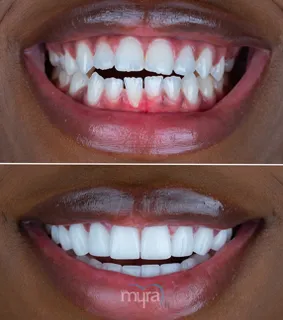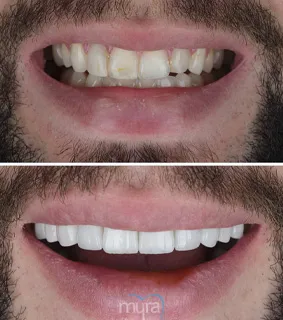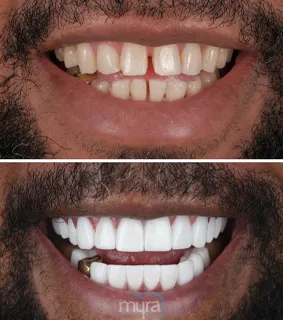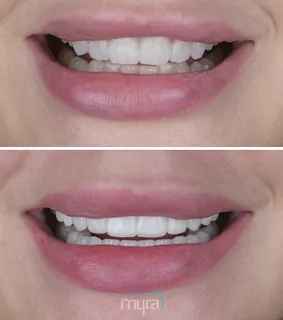Inlays are a type of dental procedure that is used to fix teeth that are broken or suffer from decay. Inlays are fillings which are made outside the mouth and stuck to the surface of the tooth. Inlays are an important component in making teeth look and work as new again. Inlays are a more conservative option that lasts longer and keeps more of the good tooth structure.
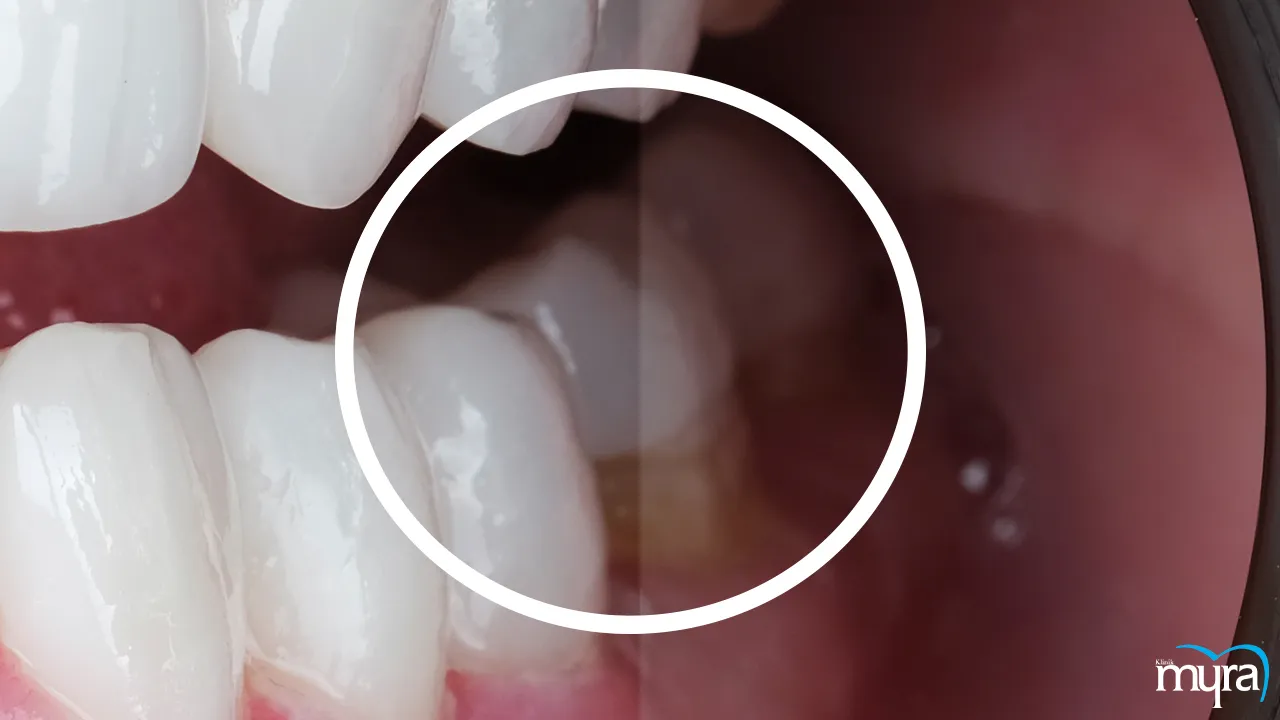
Inlay is an important part of modern dentistry. Inlays help people to keep their teeth healthy and beautiful by giving broken or rotten teeth their original shape and function. Inlays are made of gold, and inserts are made of composite plastic. Tooth-coloured inlays fit in perfectly with the other teeth, gold inlays are known for being strong, and composite resin inlays look great and stick well.
What is inlays?
Inlays are a type of dental repair used for repairing broken or damaged teeth. Inlays are fillings that are made outside the mouth and attached to the surface of the treated tooth. They are made to fit perfectly inside the hole of a tooth to look smooth and natural. Inlays are made from long-lasting materials, such as porcelain, composite resin, or gold, which look good and last long. Inlays save the good part of the tooth, which helps keep the power and stability of the damaged tooth. They are stronger and last longer than standard inlays.
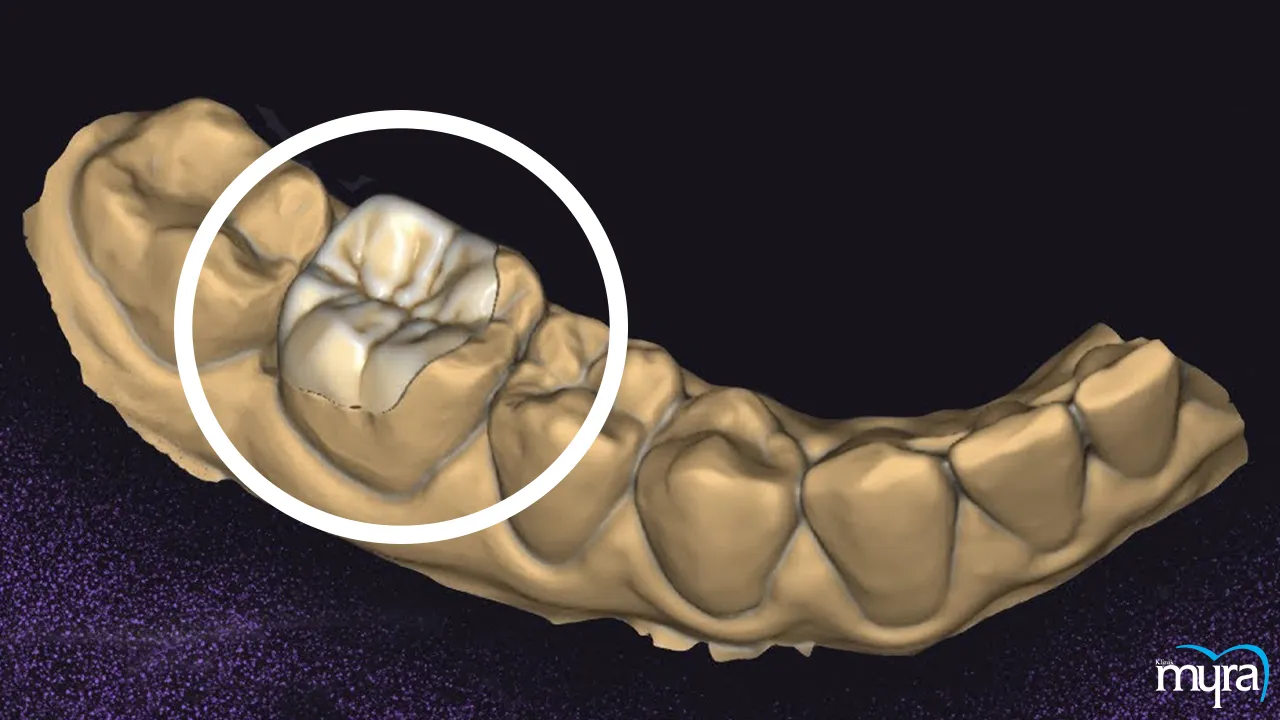
Inlays are made to resemble natural teeth around them in terms of shape, colour, and texture. Inlays give a smile that looks good and fits well. They are made to appear as a normal part of the tooth. Inlays are a safe and effective way to treat tooth damage. They fix the shape, function, and look of teeth that are broken or rotted and show how useful they are in dental restoration.
What is the importance of inlays?
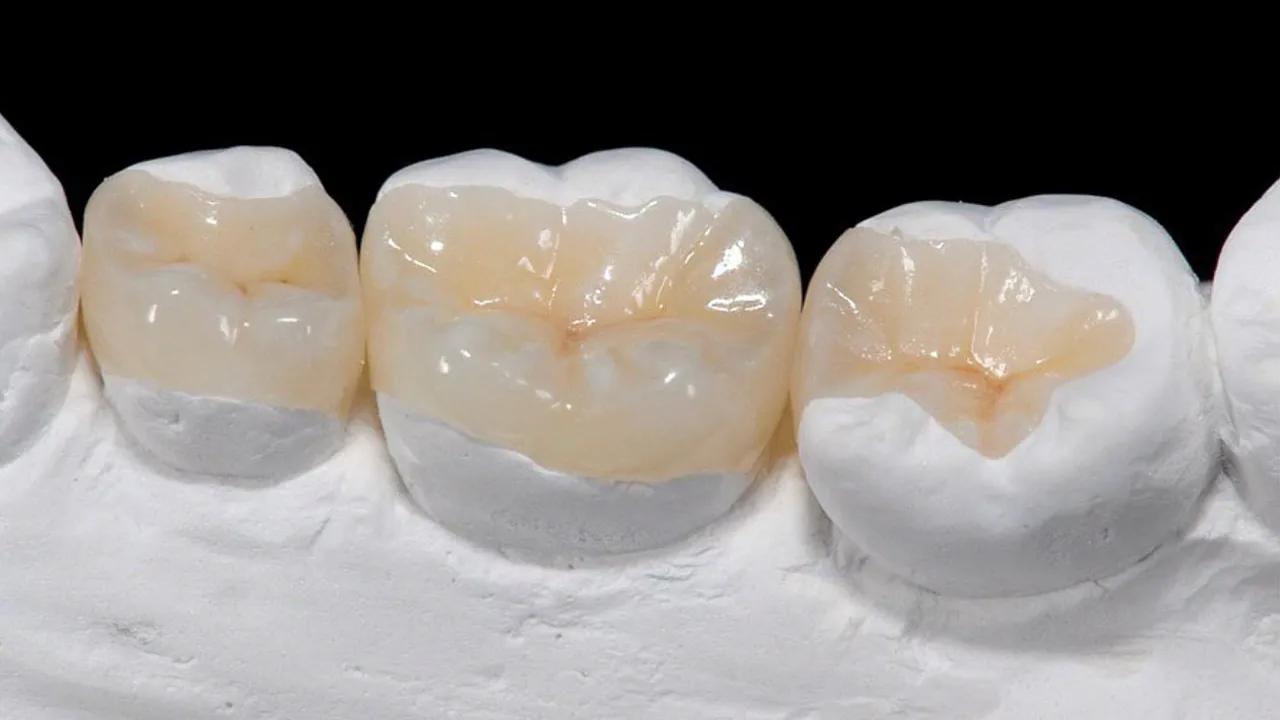
Listed below are the importance of inlays.
- Preserving Healthy Tooth Structure: Inlays are a safe way to fix a tooth because they save more of the healthy tooth structure. Inlays are different from traditional fillings. It helps the tooth in keeping its natural strength and structure, which is good for its long-term health.
- Longevity and Durability: Inlays are made of long-lasting materials, such as ceramic, composite resin, or gold. The materials are known for being strong and able to stand up to being bit and chewed on. Inlays are a long-lasting option that means patients do not have to fix or replace things as often.
- Natural Look: Inlays are made to match the colour, shape, and texture of the natural teeth around them. Inlays ensure that the end is smooth and looks good. The natural look of inlays makes it hard to identify apart from the rest of the teeth, which makes the smile look better.
- Functional Restoration: Inlays repair a tooth's function and occlusal or bite surfaces by fitting exactly into a tooth's hollow. Inlays have a smooth surface that makes it easy to chew, eat, and talk without pain or problems.
- Resistance to Stains: Materials used for inserts are very resistant to stains. Inlays’ qualities help the repair keep its look lasts longer and ensure that the patient's smile stays bright and beautiful.
- Minimally Invasive Treatment: A small amount of tooth material needs to be taken away when putting inserts. More of the normal tooth is left in place, which makes the surgery more careful and less invasive.
- Versatility: Inlays are used in a variety of ways because they’re made to fit different tooth shapes and sizes. Inlays are used to fix a lot of different kinds of tooth damage, such as big holes, broken or cracked teeth, or worn-down surfaces.
1. Preservation of Natural Tooth Structure
Preserving natural tooth structure reduces the risk of complications or future concerns associated with the removal of excessive tooth material. Preservation of natural tooth structure allows the tooth to retain its natural form and function, promoting long-term oral health and stability. Inlays provide a conservative approach that prioritises the preservation of natural tooth structure and makes them an important option in dental restorations.
The importance of preserving natural tooth structure through inlays is not overstated. The dentist removes the damaged or decayed portion of the tooth, minimising the need for extensive removal of healthy tooth structure by using inlays. The preservation is crucial because it helps maintain the strength, integrity, and health of the tooth.
2. Functional Restoration
The functional restoration enables patients to regain full use of their teeth, allowing them to eat or speak and engage in regular activities without discomfort or limitations. Inlays address the concern by precisely fitting within the prepared cavity of the tooth and creating a smooth and comfortable chewing surface.
Inlays contribute to improved oral health, overall well-being, and quality of life by restoring the functionality of damaged teeth. They play an important role in ensuring that patients enjoy the normal functioning of their teeth and maintain their daily routines with ease and comfort.
The importance of functional restoration with inlays lies in their ability to repair damaged or decayed teeth and restore their proper function. Compromised teeth are affected due to decay, fractures or other issues, and their ability to bite, chew, and perform everyday functions.
3. Aesthetic Enhancement
The aesthetic benefit is important in restoring front teeth or teeth that are visible when smiling or speaking. Inlays help create a harmonious and pleasing smile by blending seamlessly with the natural dentition. Aesthetic enhancement has a significant impact on a person's self-confidence and overall perception of their dental aesthetics. Patients achieve a smile that looks natural, healthy, and appealing with inlays.
The aesthetic enhancement provided by inlays plays a vital role in boosting self-esteem, enhancing social interactions, and improving satisfaction with one's appearance. The importance of aesthetic enhancement with inlays lies in their ability to improve the appearance of damaged or decayed teeth, resulting in a more attractive smile. Inlays are carefully crafted to match the colour, shape, and texture of the surrounding natural teeth and ensure a seamless and natural-looking result.
4. Durability and Longevity
Durability and longevity are very important for inlays to be long-lasting dental implants that withstand the daily wear and tear of the mouth. Inlays are made of strong and long-lasting materials, such as porcelain, composite resin, or gold, which are very strong and don't break easily. They are strong enough to resist the forces of biting and eating, so they are not easily damaged or worn out too soon. Inlays are long-lasting repairs because they are made from materials that are known to be strong.
Inlays are made to be a reliable and long-lasting way to fix damaged teeth. Inlays are long-lasting if the patient takes good care of them by brushing and flossing their teeth and going to the dentist regularly. People don't have to change them as often, which saves them time, money, and the difficulty of going to the dentist more often.
Inlays give people peace of mind because they know their dental restorations are effective and last longer. They are made of strong materials and have long-lasting restorations. Inlays are part of the general success and happiness of dental care, making sure that customers enjoy the benefits of their inlays for years to come.
5. Prevention of Further Damage
The prevention of further damage to teeth must not be overlooked. A damaged tooth becomes vulnerable if left untreated. Inlays play a vital role in halting the progression of damage and preventing further deterioration. Inlays provide a protective barrier that shields the tooth from bacteria, plaque build-up, and further decay. Inlays are done by filling and sealing the cavity or damaged area of the tooth. The preventive measure is essential in preserving the remaining healthy tooth structure and avoiding more extensive dental issues in the future.
Inlays act as a reliable and durable restoration that reinforces the damaged tooth structure and provides stability and strength. The reinforcement helps prevent fractures, cracks, or other types of damage that occur if the tooth is left untreated.
Patients avoid the need for more extensive and invasive treatments, such as root canals or extractions, required if the damage progresses by addressing the problem immediately. Inlays provide a conservative and proactive approach to dental care, emphasising the importance of timely intervention and the prevention of further damage.
The prevention of further damage offered by inlays maintains oral health but saves patients from pain, discomfort, and the need for more complex dental procedures. Inlays contribute to oral health and long-term dental stability by fixing dental issues promptly.
6. Customization and Precision
The importance of customization and precision in inlays lies in their ability to provide tailored and fitted dental restorations. Inlays are crafted to fit the specific size, shape, and contours of the prepared cavity in a tooth.
Customization ensures that the inlay integrates with the surrounding teeth, creating a natural and good-looking appearance. The colour, shape, and texture of the inlay are matched to the patient's natural dentition, resulting in a restoration that is indistinguishable from the rest of the teeth. The attention to detail enhances the aesthetics of the smile, boosting patient confidence and satisfaction.
Precision is vital in the fabrication and placement of inlays. The accurate fit of an inlay ensures that it provides a proper seal and a comfortable bite. The precise measurements and impressions taken by the dentist allow the dental laboratory to create an inlay that perfectly fits the tooth's prepared cavity. The level of precision ensures that the restoration is functional and provides long-term stability.
The importance of customization and precision in inlays must not be overstated. Custom inlays provide restorations that blend seamlessly with the natural dentition, creating an attractive and natural-looking smile. The precision fit ensures proper function, comfort, and longevity of the restoration. The combination of customization and precision allows for optimal results in terms of both aesthetics and functionality, making inlays a highly valued treatment option in restorative dentistry.
7. Conservative Alternative to Crowns
Inlays are a safe option for dental crowns because they keep more of the original tooth structure while restoring the tooth. A dental crown is suggested. Inlays are a more traditional choice when a tooth is broken or has a lot of decay.
Inlays need a small amount of tooth structure to be taken away, while crowns need a lot of good tooth structure to be taken away. Keeping the tooth's natural structure is important because it helps keep the tooth strong and whole, lowering the risk of problems or damage in the future.
Inlays are made to fit inside the formed hole and hide the part of the tooth that is broken or rotted. Patients retain more of their original tooth structure with careful treatment, but they get a good replacement.
Inlays are a conservative alternative to dental crowns that give customers a more conservative and less invasive choice. Inlays find a good mix between keeping the normal tooth structure and repairing teeth that are broken or rotted. The method is good when the damage or decay is in one part of the tooth. It lets the healthy parts of the tooth stay healthy while the damaged part is fixed.
Inlays are a safe option than crowns because they keep more of the natural tooth structure, are less invasive, and keep the mouth healthy and in good shape for the long run. Inlays help patients' health by putting less stress on their natural teeth while restoring the teeth and giving them a safe treatment choice.
What factors determine whether a tooth is suitable for an inlay restoration?
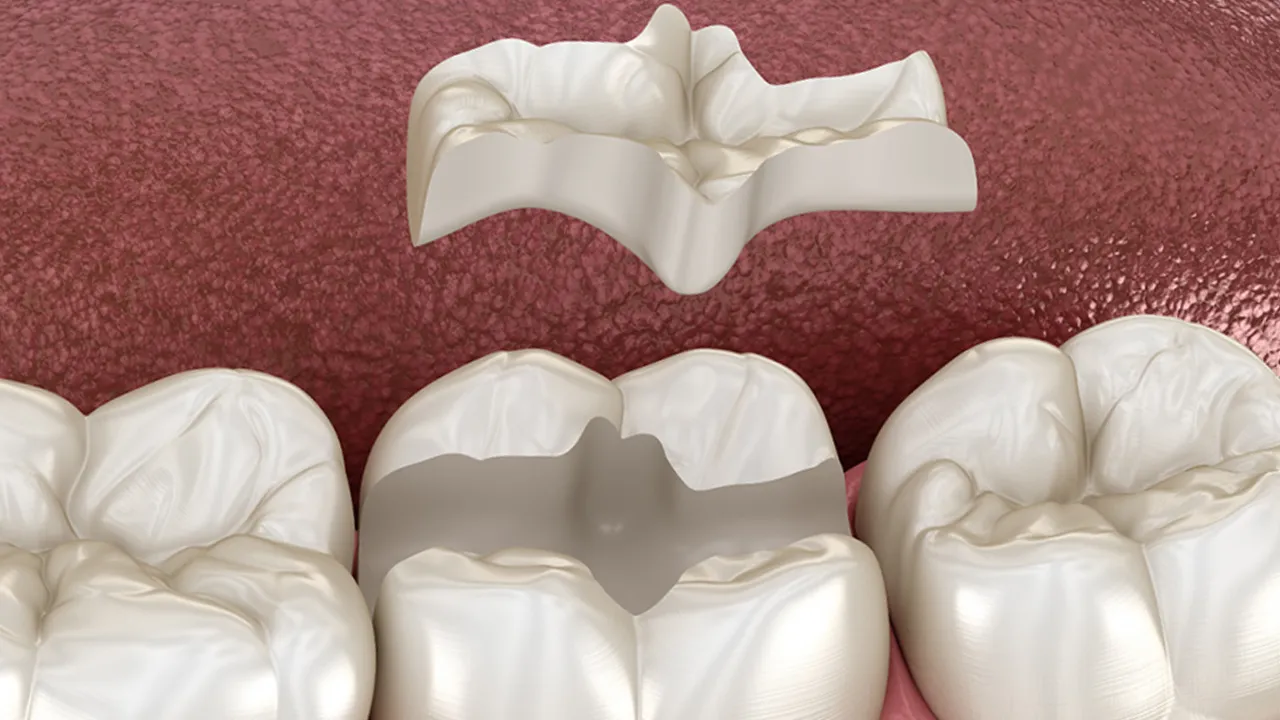
Several factors determine whether a tooth is suitable for an inlay restoration, including the extent of damage, tooth strength, location of the tooth, patient’s oral health, patient bite alignment, patient preferences, and goals.
The degree of damage or decay in the tooth is an important consideration. Inlays are used for moderate to severe cases where the damage or decay affects a significant portion of the tooth's structure. Fillings are more appropriate in cases where the damage is minimal, or the decay is shallow.
The strength and structural integrity of the tooth play a role in determining its suitability for an inlay restoration. Other treatment options, such as dental crowns, are necessary to provide support and protection if the tooth structure is severely weakened or compromised.
The location of the tooth within the mouth is an essential factor. Inlays are used for back teeth, such as molars and premolars, that endure significant biting and chewing forces. The durability and strength of inlays make them well-suited for withstanding the forces. Alternative options, such as veneers, are preferred for front teeth or teeth that require highly aesthetic restorations.
The patient's oral health is a critical consideration. Inlays require a healthy oral environment for long-term success. Problems need to be addressed before considering an inlay restoration if there are underlying oral health issues, such as gum disease or significant tooth decay throughout the mouth.
The patient's bite alignment and occlusion, and how the teeth come together, need to be evaluated. Inlays must be placed in a way that ensures proper bite function and avoids interference with the opposing teeth. Additional treatments or orthodontic adjustments are necessary before proceeding with an inlay restoration if the bite alignment is compromised.
The patient's preferences, expectations, and desired outcomes must be considered. Open communication with the dentist about aesthetic concerns, durability requirements, and long-term goals helps determine if an inlay restoration is the right choice.
Are inlays a suitable option for both front and back teeth restorations?
Yes, inlays are a suitable option for both the front teeth and the back teeth. Inlays are repairs that are used to fix broken or worn teeth in different parts of the mouth.
Molar and premolar inlays are used because they are strong and capable of holding up to the forces of biting and eating in that area. Back teeth have to do more work than front teeth, so inlays are made of materials, such as porcelain or composite plastic, that are very strong and last a long time.
The choice between inlays and other treatments, such as veneers or crowns, varies on several things for front teeth. Inlays are used to fix damaged or decayed front teeth that need a strong, long-lasting fix. The dentist needs to examine where the damage is and how bad it is, and the patient's opinions and worries about how the tooth looks. Minimal planning is needed, or the main concern is the tooth's appearance, and other choices are better, such as veneers.
How is the placement of an inlay carried out?
Putting in an inlay includes preparing the tooth, taking an image, making a temporary repair, making the inlay, attaching it to the tooth, and finishing and cleaning it. The doctor gets the tooth ready for the implant. It means getting rid of any decay or broken tooth structure. The tooth is shaped to make room for the implant while keeping as much of the healthy tooth.
The dentist uses dental wax or a computer camera to make a mould of the tooth after tooth preparation. The print records the exact size and shape of the tooth to make sure that the implant fits perfectly. The tooth is protected by a temporary filling, while the permanent inlay is made in a dental laboratory. The temporary filling is used to make the temporary repair, which is taken out when the permanent inlay is ready.
The impression is used to make the final inlay repair in the dental lab. The insert is made by skilled dental workers out of the material the patient chooses, such as porcelain, composite resin, or gold. The making process makes sure that the implant is made to fit the exact size and shape of the tooth that has been prepared.
The dentist takes out the temporary fix and checks the fit, shape, and colour of the inlay once the permanent inlay is ready. The implant is firmly attached to the tooth with dental glue and glueing agents. The inlay is placed carefully and glued in place. It ensures that the inlay is in the right place and that it fits well with the other teeth.
The dentist grinds it to make it look smooth and natural after the implant is glued in. The process helps ensure that the implant fits in well with the other teeth and makes it easy to bite.
Is inlays procedure a time-consuming procedure?
No, the inlays procedure is not time-consuming. The procedure is completed in a reasonable amount of time, while the exact duration varies depending on the complexity of the case and the number of inlays being placed.
The entire process, from tooth preparation to the bonding of the final inlay, is completed within one or two dental visits in most cases. The duration of each visit depends on factors, such as the number of teeth involved, the condition of the tooth being restored, and the specific treatment plan.
The dentist prepares the tooth, takes impressions, and places a temporary restoration during the first visit. The impressions are sent to a dental laboratory for the fabrication of the final inlay. The time required for the laboratory to create the custom-made inlay varies, but it takes a few days to a couple of weeks.
The patient returns for the second visit, during which the temporary restoration is removed, and the final inlay is bonded onto the tooth once the permanent inlay is ready. The bonding process takes a relatively short amount of time.
The placement of inlays is considered a straightforward and efficient procedure. Dentists and dental technicians work together to ensure the accurate fabrication and precise placement of the inlay, minimising the time required while delivering high-quality results.
Do inlays require special oral hygiene or diet?
No, inlays do not require special oral hygiene or diet beyond regular good oral hygiene practices. It becomes a part of the natural tooth structure once the inlay is placed and bonded onto the tooth.
Maintaining proper oral hygiene, such as brushing twice a day and flossing daily, is essential for the overall health and longevity of both the inlay and the surrounding teeth. Regular dental check-ups and professional cleanings are important to ensure the inlay remains in optimal condition and to address any potential issues early on.
There are no specific dietary restrictions or modifications required for individuals with inlays in terms of diet. It is advisable to practise a balanced diet that promotes good oral health, which includes limiting sugary and acidic foods and beverages. The recommendations apply to maintaining overall oral health and protecting natural teeth, and inlay restoration.
Inlays, such as natural teeth, are subject to wear and tear over time. Habits or activities, such as chewing on hard objects or using teeth as tools, do compromise the integrity of the inlay even though they are durable. It is advisable to avoid them and protect the teeth by using appropriate mouthguards when engaging in sports or activities that pose a risk of dental injury.
What are the different types of inlays?
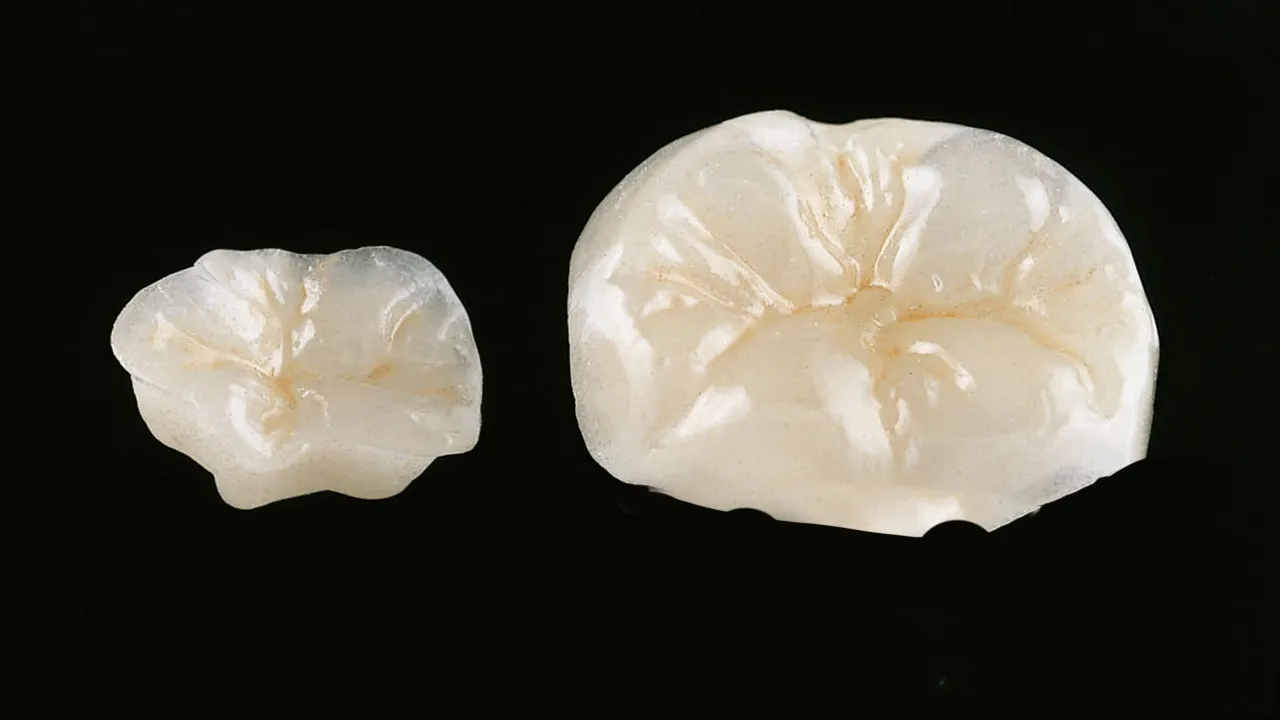
Listed below are different types of inlays.
- Traditional or Direct Inlays: Traditional or direct inlays are made by the dentist at a single dental appointment just within the mouth of the patient. Traditional or direct inlays are constructed from a composite resin substance that is shaped and affixed to the surface of the tooth that has been prepared. The kind of inlay provides ease and is anticipated to be finished more quickly.
- Indirect Inlays: Indirect inlays are made-to-order restorations in a dental laboratory. Indirect inlays are created using digital scans or dental imprints of the prepared tooth. Gold, porcelain, ceramic, and other materials are used to create indirect inlays. They need two dental visits, with one visit being followed by the placement of a temporary repair.
- Composite Inlays: A tooth-coloured composite resin substance is used to directly put and adhere composite inlays onto the tooth surface. The composite resin is moulded and sculpted, giving it a natural look to suit the prepared cavity. Composite inlays are fitted and provide high strength and longevity in one dental appointment.
- Ceramic or Ceramic Inlays: Ceramic or ceramic inlays are made-to-order implants that are created in a dental laboratory. Ceramic or ceramic inlays are made of premium dental ceramic, which was selected for both its longevity and good looks. They are made of ceramic or porcelain and provide a long-lasting and aesthetically acceptable repair because they closely mimic the colour, translucency, and texture of real teeth.
- Gold Inlays: Custom-made gold inlays are made in a dental laboratory from a gold alloy. Gold inlays have a long history of usage in dentistry because of their outstanding strength, longevity, and biocompatibility. Gold inlays are very durable and endure chewing and biting pressure.
1. Traditional or Direct Inlays
Traditional or direct inlays are created immediately within the mouth using composite resin. The oral surgeon creates the filling over one dental visit. Traditional or direct inlays are advantageous because they are performed in one appointment, which eliminates the demand for a laboratory to perform them. They're more cost-effective compared to indirect inlays. The composite resin utilised in direct inlays is not as strong as the materials used for other forms of inlays. They require replacement or maintenance more frequently. Direct inlays are the most cost-effective option available for inlays.
2. Indirect Inlays
Indirect inlays are created outside the mouth in a dental laboratory. Indirect inlays are custom-made based on dental impressions or digital scans and bonded onto the prepared tooth surface during a subsequent appointment. Indirect inlays offer superior durability and longevity due to the use of high-quality materials. They provide a precise and customised fit for optimal function and aesthetics. The process requires two dental visits, with a temporary restoration placed between appointments. Indirect inlays are more expensive than direct inlays due to the additional laboratory fabrication process.
3. Composite Inlays
Composite inlays are composed of tooth-coloured composite resin material that is adhered directly to the tooth surface. Composite inlays are aesthetically pleasing because their colour matches the neighbouring teeth. They require minimal dental preparation and form a robust bond with the tooth structure. Composite embellishments are less resistant to discolouration and weathering than inlays made from other materials. Ceramic or gold inlays are more expensive than composite inlays.
4. Ceramic or Porcelain Inlays
Ceramic or porcelain inlays are created in a laboratory for dentistry from high-quality dental ceramic material. Ceramic or porcelain inlays are made to match the shape and colour of genuine teeth. Ceramic inlays look great and are a good way to repair teeth because they appear to be natural teeth. They last a long time and don't get stained easily. Ceramic inserts cost more compared to other types of inlays.
5. Gold Inlays
Gold inlays are made from a gold alloy and are custom-fabricated in a dental laboratory. Gold inlays have a long history of use in dentistry due to their strength and durability. Gold inlays provide exceptional strength, longevity, and biocompatibility. They offer excellent wear resistance and have a proven track record of success. They tend to be more expensive than other types of inlays.
Traditional or direct inlays are created directly in the mouth during a single appointment, whereas indirect inlays are fabricated in a dental laboratory. Composite inlays are directly placed and bonded onto the tooth surface, while ceramic, gold and certain composite inlays are custom-made outside the mouth. Ceramic or porcelain inlays excel in aesthetics, closely mimicking the appearance of natural teeth, while gold inlays are popular for their remarkable strength and longevity.
Direct inlays tend to be the most affordable option, followed by composite inlays, ceramic inlays, and gold inlays, which represent a higher investment due to their premium materials and fabrication processes.
How to know which type is suitable for you?
Consult a qualified dentist to determine which type of inlay is suitable. The dentist considers several factors to recommend the most appropriate type of inlay based on the specific needs and circumstances.
The dentist evaluates the condition of the tooth, the extent of damage or decay, the location of the tooth inside the mouth, and aesthetic preferences during the consultation. They take into account one’s oral health, the biting forces exerted on the tooth, and any budgetary considerations.
The dentist explains the pros and cons of each type of inlay and discusses how they align with the treatment goals. Durability, aesthetics, longevity, and cost are considered to make an informed decision.
Multiple types of inlays are suitable for specific situations, and the final choice comes down to one’s personal preferences in some cases. Aesthetics are a top priority. Ceramic or porcelain inlays are recommended, while gold inlays are suggested if longevity and strength are paramount for example. Receive expert guidance and recommendations tailored to specific needs by consulting with a knowledgeable dentist.
How much is inlays?
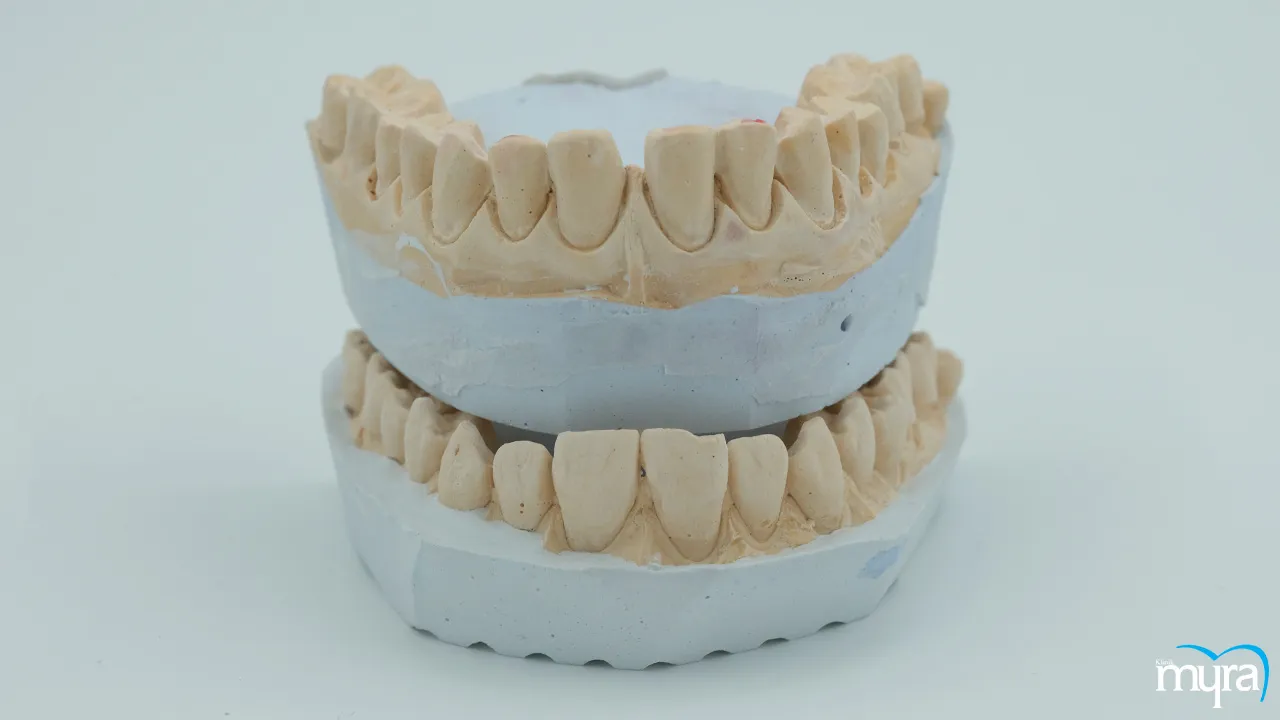
The price of inlays ranges from £150 to £2,600 depending on which type of inlays. The cost of inlays varies depending on factors such as the material used, the complexity of the procedure, the dentist's location, and the specific dental clinic or practitioner.
Direct inlays are less expensive than indirect inlays because the process is easier and there are no lab fees. The price runs from £150 to £600 per tooth, based on where it is and how complicated the repair is.
Indirect inserts cost more in the lab and require two trips to the dentist. The price runs from £600 to £1,900 or more per tooth, based on the materials used, the amount of the repair, and other factors.
Composite inlays cost less than those made of clay or gold. The price runs from £220 to £900 per tooth, depending on the size and difficulty of the repair.
Ceramic or ceramic inlays look better and last longer than composite inserts, but they tend to be more expensive. The price runs from £250 to £1,900 or more per tooth depending on the size, materials used, and other factors.
Gold accents are the most expensive choice because the valuable metal is expensive, and making them takes a lot of work. The price per tooth runs from £760 to £2,600 or more, based on its size, complexity, and the present price of gold.
Are inlays prone to staining or discolouration over time?
No, inlays are not prone to staining or discolouration over time. Inlays are made from materials, such as ceramic, porcelain, or composite resin, which are highly resistant to staining. The materials are selected for their ability to maintain their colour and appearance even with regular exposure to food and beverages.
Regular brushing, flossing, and dental checkups help inlays last and look good. Avoiding habits, such as smoking and excessive consumption of staining substances, such as coffee, tea, or red wine. It minimises the risk of any potential discolouration.
Can inlays be whiten?
No, inlays cannot be whitened. Inlays are made of materials that are resistant to the effects of teeth whitening treatments, such as ceramic, porcelain, or composite resin. The materials don't change colour and don't respond in the normal ways that real teeth are whitened.
Talk to a dentist about how the colour of the implant looks with the rest of the teeth. They look at the situation and make suggestions, such as replacing the implant with a shade that matches the desired tooth colour better or thinking about other cosmetic treatments to make the teeth look more regular.
Are inlays and dental fillings the same?
No, inlays and dental fillings are not the same. Inlays and dental fillings both serve the purpose of restoring teeth. The main difference lies in the extent of tooth damage and the technique of placement.
Dental fillings, known as dental fillings or simply fillings, are used to repair small to moderate-sized areas of tooth decay or damage. The procedure involves removing the decayed or damaged tooth structure and filling the space with a suitable material, such as composite resin, amalgam, or glass ionomer cement. Fillings are placed directly into the prepared cavity during a single dental visit.
Inlays are used for larger areas of tooth decay or damage that be effectively restored with a filling. Inlays are custom-made restorations that are fabricated in a dental laboratory based on dental impressions or digital scans. They are designed to fit precisely within the prepared cavity and are usually made of materials such as ceramic, porcelain, composite resin, or gold. Inlays are bonded onto the tooth surface during a separate dental visit.
What is the difference of inlays to dental crown?
The main differences between inlays and dental crown are covering, how the tooth is prepared, the material used and how it is made, the way it works and how strong it is, and how long the treatment takes.
Inlays cover a small part of the tooth, while crowns cover the whole top part that sees. Inlays need a small amount of tooth reduction, while crowns need a lot more. They are both made of the same materials, but crowns are stronger because they cover the whole tooth. Inlays restore shape and function while keeping the tooth's structure intact, while crowns give badly broken or weak teeth a lot of structural support. It takes two visits to put in an inlay, but it takes more than two to put in a dental crown.
A dentist looks at the damage, the strength of the tooth, and the treatment goals to decide between inlays and caps.
What is the difference between inlays and onlays?
The main differences between inlays and onlays include coverage, tooth preparation, function and strength, and material and fabrication.
Inlays cover the chewing surface and walls within the cusps, while onlays extend beyond the cusps to cover a larger area of the tooth. Inlays involve shaping within the cusps, while onlays require additional shaping beyond the cusps. Onlays provide more extensive coverage and structural support compared to inlays. The two are made from similar materials and custom-fabricated in a dental laboratory.
The choice between inlays and onlays depends on the extent of damage or decay and the specific needs of the tooth being restored, as determined by a dentist during the treatment planning process.






